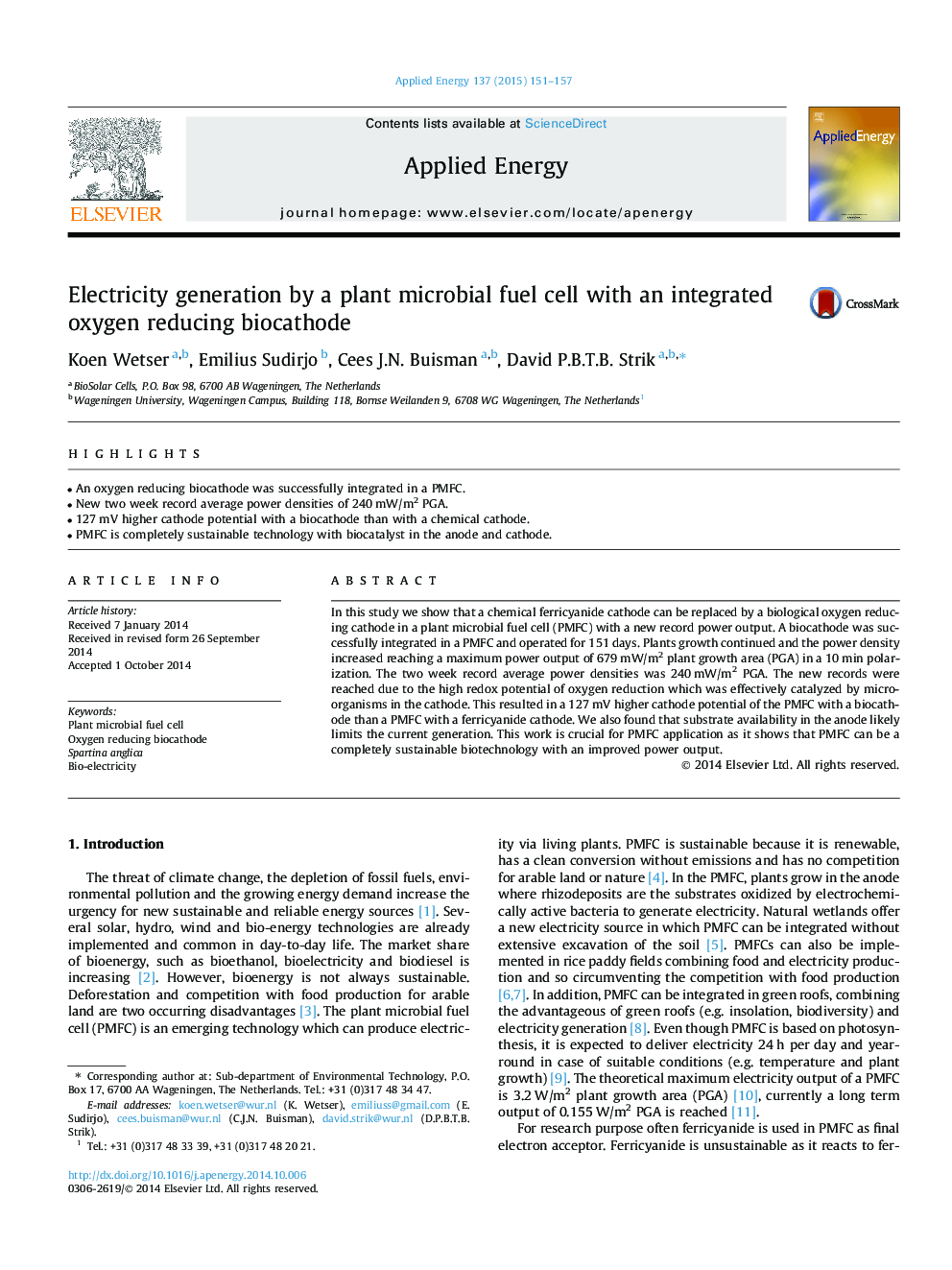| Article ID | Journal | Published Year | Pages | File Type |
|---|---|---|---|---|
| 6688432 | Applied Energy | 2015 | 7 Pages |
Abstract
In this study we show that a chemical ferricyanide cathode can be replaced by a biological oxygen reducing cathode in a plant microbial fuel cell (PMFC) with a new record power output. A biocathode was successfully integrated in a PMFC and operated for 151Â days. Plants growth continued and the power density increased reaching a maximum power output of 679Â mW/m2 plant growth area (PGA) in a 10Â min polarization. The two week record average power densities was 240Â mW/m2 PGA. The new records were reached due to the high redox potential of oxygen reduction which was effectively catalyzed by microorganisms in the cathode. This resulted in a 127Â mV higher cathode potential of the PMFC with a biocathode than a PMFC with a ferricyanide cathode. We also found that substrate availability in the anode likely limits the current generation. This work is crucial for PMFC application as it shows that PMFC can be a completely sustainable biotechnology with an improved power output.
Related Topics
Physical Sciences and Engineering
Energy
Energy Engineering and Power Technology
Authors
Koen Wetser, Emilius Sudirjo, Cees J.N. Buisman, David P.B.T.B. Strik,
